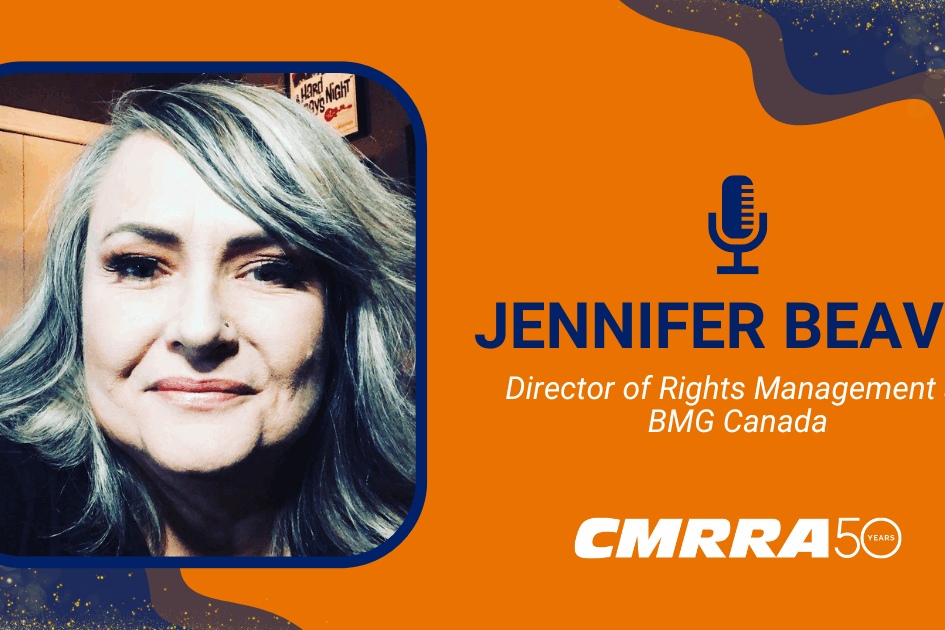By Isabelle Speerin
The Canadian Musical Reproduction Rights Agency (CMRRA) has been a committed partner for the music publisher community over the past fifty years. In an interview, Gary Furniss of Sony Music Publishing and Jennifer Mitchell of Red Brick Songs discuss CMRRA’s achievements and future prospects. Both have been integral to the CMRRA Board of Directors, with Furniss leading as Chair from 2007 to 2017.
In a bold move over twenty years ago, CMRRA entered the digital age by securing digital rights licensing agreements through direct negotiations with platforms like iTunes. When iTunes wanted to follow U.S. practice that saw digital mechanical royalties being paid to music publishers via the record labels under a “pass-through” licensing structure, CMRRA stood firm, insisting on direct payments to publishers in Canada. This landmark deal was transformative, with digital royalties now comprising 90 percent of CMRRA’s revenue.
According to Mitchell, there is a sense of gratitude and appreciation today for the magnitude of that negotiation in 2004, even from our neighbours to the south who lament not following the same path. “By configuring iTunes correctly, we laid the groundwork for any new technologies coming our way,” she noted.
Furniss agreed that holding out for the right deal was crucial. “It allowed us to secure higher rates and ensured publishers were paid directly, without intermediaries. It was a hard push, but very important to the future of music publishing in Canada.”
With the evolution of streaming technologies, Mitchell noted, “Canada was one of the last Western nations where major digital services launched, as we drove more challenging negotiations to ensure publishing rights were respected and as a result achieved some of the highest rates worldwide.”
The negotiation process was not without its challenges. Furniss recalls the intense pressure from industry stakeholders, who were eager to see the deal finalized. “Songwriters and publishers were also keen for their music to be available on digital platforms,” he explained. “We had to push back and explain we were doing this to protect their rights for the long term.”
CMRRA demonstrated its commitment to publishers again in 2011 when it undertook the administration work for a class action settlement involving unpaid royalties by the major record labels in Canada. This included a series of phased distributions of the settlement amounts based on individually licensed and claimed shares of musical works, supported by a custom-built claims portal.
“The creation of this claims portal from the ground up was significant because it demonstrated CMRRA was able to step up and take a leadership role,” Mitchell said. “It was about ensuring every publisher and songwriter, no matter how small, received what they were owed.”
The launch of CMRRA’s Licensing and Royalty Distribution System (LDS) in 2015 later marked another significant boost in royalty distributions, thanks to enhanced matching capabilities and high-volume data processing.
“This upgrade was crucial for indie publishers.” said Mitchell. “The detailed statements and reliable data processing made managing our royalties so much smoother. It was a necessary system upgrade that positioned CMRRA as a leader in the space.”
According to Furniss, the LDS system represented a significant technological advancement for CMRRA. “The volume of data we were dealing with had increased exponentially,” he said. “We needed a system that could handle this efficiently and accurately, and LDS delivered.”
Furniss recalls the 2016 partnership with SoundExchange as another particularly noteworthy event in CMRRA’s five-decade journey. “It was a large undertaking for the Board and a major change going forward,” Furniss said, noting that SoundExchange has been exceptional at understanding the needs of Canadian music publishers.
Mitchell added, “The partnership with SoundExchange helped CMRRA scale and keep pace with technology, and provided a deeper bench of management support services. It was a big decision for the Board, and it has proven to be beneficial for the agency’s growth.”
A recurring theme with both Furniss and Mitchell is how well major and indie publishers have worked together towards common goals over the past fifty years, with CMRRA providing steadfast support. “We’ve always collaborated effectively, with a shared goal of maximizing revenues for songwriters and publishers in Canada,” Furniss said.
Mitchell added, “I don’t subscribe to this idea that there’s some kind of a rift between the majors and indies. I think we’re all in it together and I believe the Canadian music publishing industry is unique in its collaboration. We’ve always been under the same tent, working towards the same objectives. It is a point of pride for all of us and a key factor to our success.”
When asked about CMRRA’s legacy, Furniss pointed to CMRRA’s early visionaries. “We must give thanks to Cyril Devereux and Al Mair, who saw the Canadian industry as being important and separate from other territories and had the foresight to fill the board with like-minded people,” Furniss said. “We wouldn’t be here today without them.”
Mitchell agreed, “At the end of the day, CMRRA’s legacy is really one of successful collaboration, and we’re confident it will continue to thrive in the years to come.”
Looking to the future, both Furniss and Mitchell envision CMRRA’s growth into new markets. “CMRRA now has the expertise to expand its services beyond Canada and even into the U.S. outside of what’s covered by the Mechanical Licensing Collective,” Mitchell explained.
Furniss added, “CMRRA is well-positioned to navigate future challenges and opportunities while continuing to work together with music publishers and songwriters as one voice, along with other creative and industry stakeholders.”
Both emphasized the need to keep pace with emerging technologies. “The future is uncertain, but we’re confident CMRRA has the right team and resources to navigate these challenges,” concluded Furniss.
As CMRRA looks ahead, its legacy of innovation remains stronger than ever. With a foundation built on collaboration and a commitment to protecting songwriters and publishers, the organization is poised to take on the challenges that the evolving industry landscape will bring.




